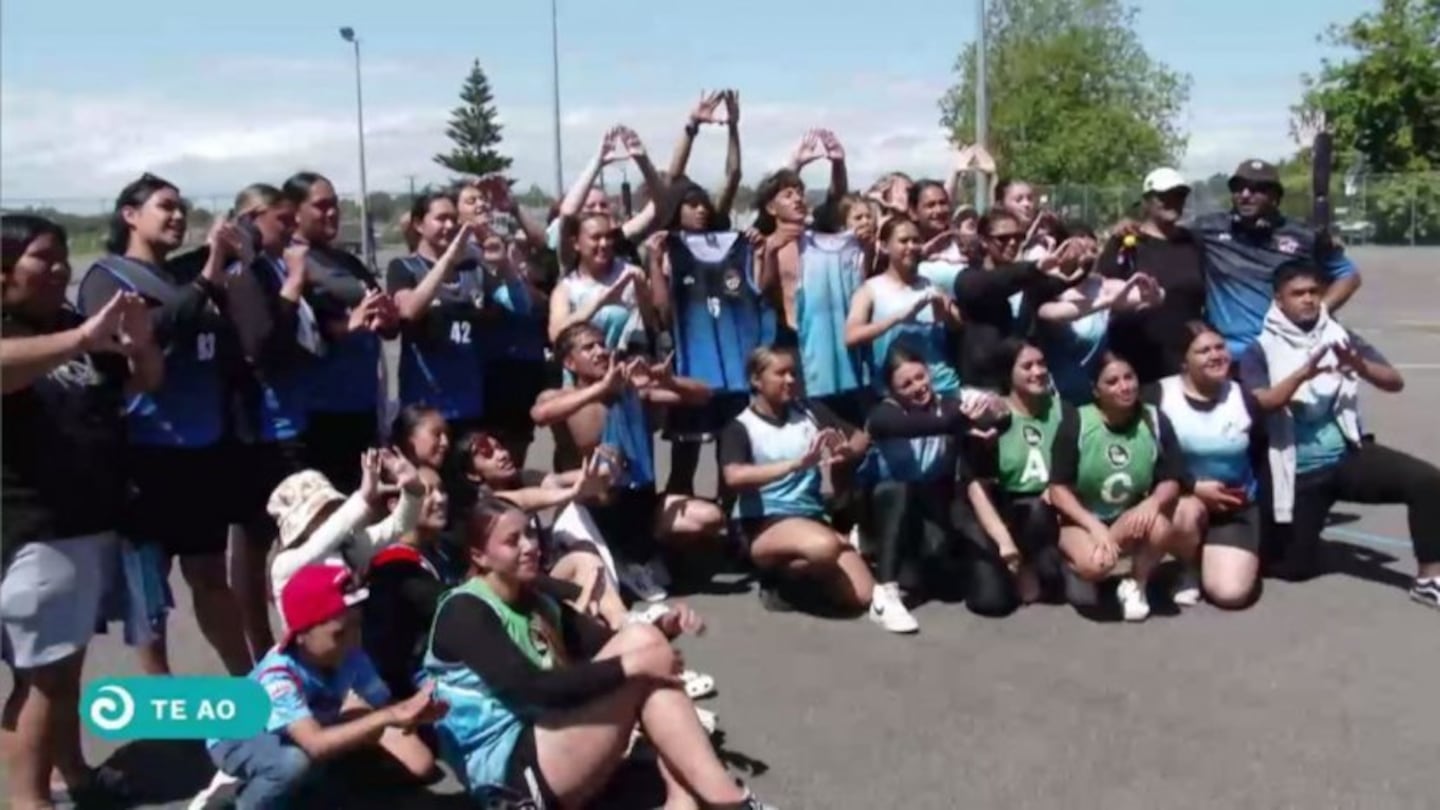Te Wiki Hā coordinator Chester Vella is immensely proud of what he says was an "unprecedented event" for Taranaki.
More than 1300 students, their whānau and volunteers from 32 Te Aho Matua Kura Kaupapa attended the week-long event Te Wiki Hākinakina.
And Vella says that makes it "the most Māori-speaking tamariki we've had in Taranaki at one time since the invasion of Parihaka (in 1881)".
The week-long sports event was delivered in te reo Māori and that spilled out on to the streets of Taranaki, with observers noting the numbers of people speaking Māori in the streets and carparks.
And locals lined up to watch Hikoi Mō te Reo Māori, a Māori language march featuring a mass poi performance through New Plymouth.
Day One of Te Wiki Hā started in Whanganui with basketball and touch at Springvale Stadium and netball at Laird Park.
Ki-o-Rahi revived
Volunteer Potaka Strongman (Te Atihaunui a Pāpārangi, Ngāti Raukawa, Ngāpuhi) collated and counted scores on day one of Te Wiki Hā.
“I am really excited about this work. This is a first for us here at Te Wiki Hā. It is really good, and I really like it. The language is flowing between us all," Strongman says.
Day Two of Te Wiki Hā was held in Hāwera at the TSB Hub with the traditional Māori game, Kī-o-Rahi.
Kī-o-Rahi is based on the legend of Rahitutakahina and his mission to rescue his wife Tiarakurapakewai and has the students playing a running and collecting points game.
Vella (Ngā Ruahine Rangi) says for some students it was their first time playing Kī-o-Rahi and he’s happy the game’s being brought back to life.
“First and foremost, I would like to acknowledge those that revived this special game. This is a traditional game of our ancestors. Due to colonisation and the Crown this game was on the brink of extinction. However, a group revived it. We always knew that, eventually, we would be playing Kī-o-Rahi,” Vella says.
Ancient game proves popular
Day Three of Te Wiki Hā included another traditional game called Hopu Ariki, definitely a hit with the students.
Hopu Ariki was held in Hāwera at a pā site called Te Ngutu o Te Manu, which was also the home of prophet, military leader and peacemaker Tītokowaru, a Māori leader of the Taranaki region.
The aim of this game is for one group to attempt to capture the opponent’s ariki or leader.
Taranaki iwi leader Wharehoka Wano says, “This is the first time I have seen this traditional Māori sport, with a fighting stick, but you can see peace and war at the same time. However, the environmental grounds were fighting on a bridge and in the forest. The life force of the forest can be felt as they were fighting and then again in the river. Those were the types of battling grounds our ancestors fought in, in their time, which is relevant to today.”

